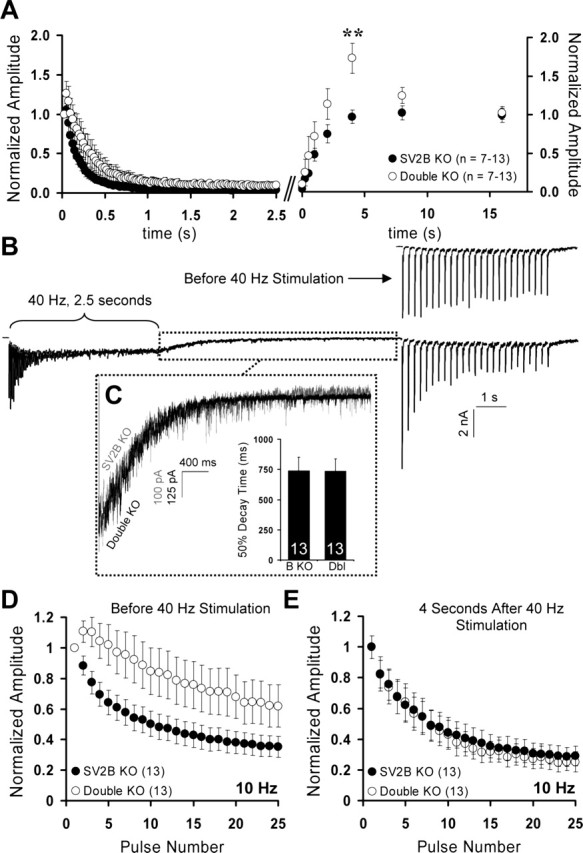Figure 8.

The SV2 knock-out phenotype can be transiently rescued by high-frequency stimulation. A, EPSC recovery after a depleting stimulus train. A 2.5 s, 40 Hz stimulus was used to deplete the RRP (left). At various times after depletion, a single EPSC was evoked, and its amplitude was normalized to the initial response of the depleting train (right). Note that, in contrast to EPSC recovery after sucrose depletion of the RRP, SV2A/B double knock-outs recover faster than SV2B knock-outs and exhibit robust enhancement at 4 s after depletion. Data points represent mean ± SEM, with numbers of cells analyzed indicated in parentheses. Data are from three independent sets of littermate cultures. B, Experimental protocol for C–E. The 10 Hz trains were delivered before and 4 s after depletion of the RRP. Shown is a representative response from an SV2A/B double knock-out neuron. C, Decay rates of asynchronous release are similar in SV2B and SV2A/B double knock-outs. The boxed region in B, illustrating asynchronous release after a stimulus train, was rescaled and overlaid with a representative trace from an SV2B knock-out neuron (shown in gray). The graph at the right shows mean times to 50% decay of this asynchronous release. The numbers of cells analyzed are indicated. Data represent three independent sets of littermate cultures. D, Normalized responses to a 10 Hz stimulus train delivered 1 min before 40 Hz stimulation reproduced our previous findings of reduced depression in SV2A/B double knock-out neurons. E, Normalized responses to a 10 Hz stimulus train delivered 4 s after 40 Hz stimulation. SV2A/B double knock-outs exhibit synaptic depression indistinguishable from SV2B knock-outs.
